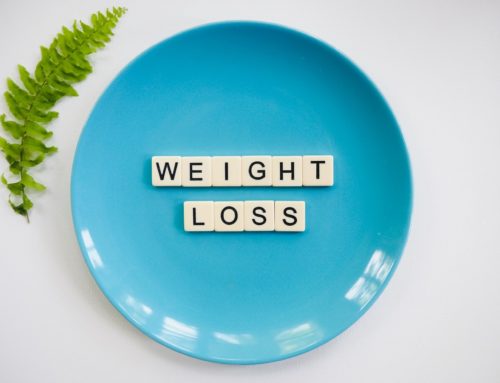While trendy diets come and go, what does not change is how the human body functions and the nutrients required for optimal health. There are disagreements and various interpretations of how much of each nutrient one should consume. Search the internet and you can find a study to support most any opinion. Ultimately this has led to mass confusion. As one of my clients recently said to me, “It’s kind of interesting when you think about it – how we are the only animals that do not know what to eat!”
In the spirit of helping you to understand what to eat and why I am offering this series of four articles. It begins with a quick overview of the three critical macronutrients – protein, fat, and carbohydrates. Subsequent articles will look in more depth at each macronutrient.
Let us begin with protein. Protein is the structural basis for our body – our muscles, ligaments, tendons, organs, glands, nails, hair, vital fluids (blood, hormones, neurotransmitters), and enzymes are all protein based. Protein builds and repairs all our cells and tissues.
We can obtain protein from both animal (meat, fish, poultry, milk, cheese, eggs) and plant sources (whole grains, legumes, nuts, and seeds). When we eat protein we are actually consuming amino acids. Different proteins have different amino acid compositions. Since our body is constantly building and repairing itself, it requires a constant supply of protein. Therefore I recommend protein is consumed with each meal.
The human body is an amazing instrument. There are thousands of things happening simultaneously, every second. To do everything the body does requires energy. The source of the body’s energy is food. Without food the body simply cannot continue to operate for a significant period of time. Both fats and carbohydrates provide energy. But they do it differently. Think of a fire. A carbohydrate is like a piece of paper. You put it in the paper and it burns up quickly and to keep the fire burning more paper is needed quickly. Fat is like a wood log. It burns smoothly, steady, and for a much longer period of time.
Carbohydrates are one of the more controversial elements of food. You will see heated debates illustrating the benefits of both low and high carbohydrate diets. The Standard American Diet (SAD) has become a high carbohydrate diet. The federal government’s recommended diet calls for 60% of calories from carbohydrates. We all know that has not produced a healthy population as obesity, diabetes, cancer and heart disease are at record rates. I’m a believer in a low carbohydrate diet. Two of today’s most popular diets – Paleo and Keto – are low carbohydrate diets.
Carbohydrates provide quick energy. They are converted into blood glucose which feeds our brain and red blood cells. Ever notice how irritable you get when hungry? The brain does not operate very well without nourishment. When most of us think carbohydrate we think grains. They are not the only choice. Vegetables and fruits contain carbohydrates and roughly 30% of protein converts to carbohydrates.
Remember this simple equation. To your body: CARBOHYDRATE = SUGAR! That’s all you need to know. If we consume lots of carbohydrates (like 60% or more of our diet) we consume lots of sugar. While sugar can be used for energy, excess sugar is converted into fat and stored. The bottom line is: it is sugar that makes us fat!
Speaking of fat, it is fat that has been unjustly demonized. We have been suffering from a low-fat craze for the last thirty years. Again, the Paleo and Keto diets challenge that assumption. Everybody (well not really everyone!) has been convinced that fat is bad for us and should be avoided at all costs. So what has happened? We got fatter! Obesity rates are going through the roof.
This is why we need fats. They make up cell membranes and hormones, are required for absorption of the fat soluble vitamins (A, D, E, and K), are critical for infant brain development and the female reproductive system, and provide energy.
There are two types of fats – saturated and unsaturated (further defined as monounsaturated and polyunsaturated). Saturated fats are solid while unsaturated fats are liquid at room temperature. Unsaturated fats are much more sensitive to light and heat. When heated they oxidize forming “free radicals” that damage cells and are linked to a variety of diseases including cancer and heart disease. Therefore, particularly when cooking we want to use saturated fats such as butter, ghee, red palm oil, or coconut oil. The latest information is that avocado oil can tolerate higher heats so can also be used for cooking. For salad dressing or other room temperature uses, olive oil and avocado oil are best.
Another fat we hear of are trans fatty acids. These are formed during the process of hydrogenation. Polyunsaturated oils, usually corn, soybean, safflower, or canola, are heated to high temperatures and injected with hydrogen atoms. During the heating process the nutrients in the oils are destroyed, the oils become solid and have oxidized. Trans fats have been linked to many ailments, including cancer, heart disease, and reproductive problems. Trans fats are commonly found in commercial baked goods, cookies, crackers, margarines, vegetable shortenings, and processed dairy products.
I hope you have enjoyed this introductory article. Subsequent articles will focus on protein, carbohydrates, and fat providing additional details on the nutrients and specific examples of good and bad food choices.
Bernard Rosen, PhD is a Nutrition Consultant and Educator. He works with individuals, groups, and at corporations to create individualized nutrition and wellness programs. His office is in Mequon, WI. To learn more or to schedule an appointment, e-mail at bernie@brwellness.com, call (262) 389-9907 or go to www.brwellness.com.








[…] For the rest of the article click here: https://brwellness.com/?p=1202. […]